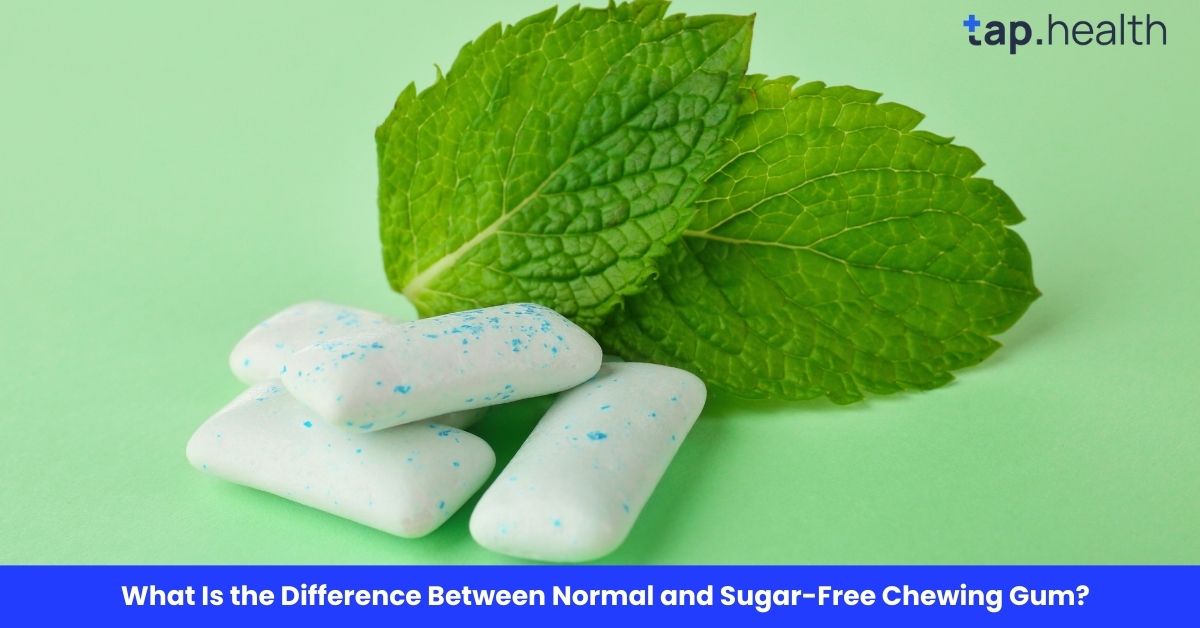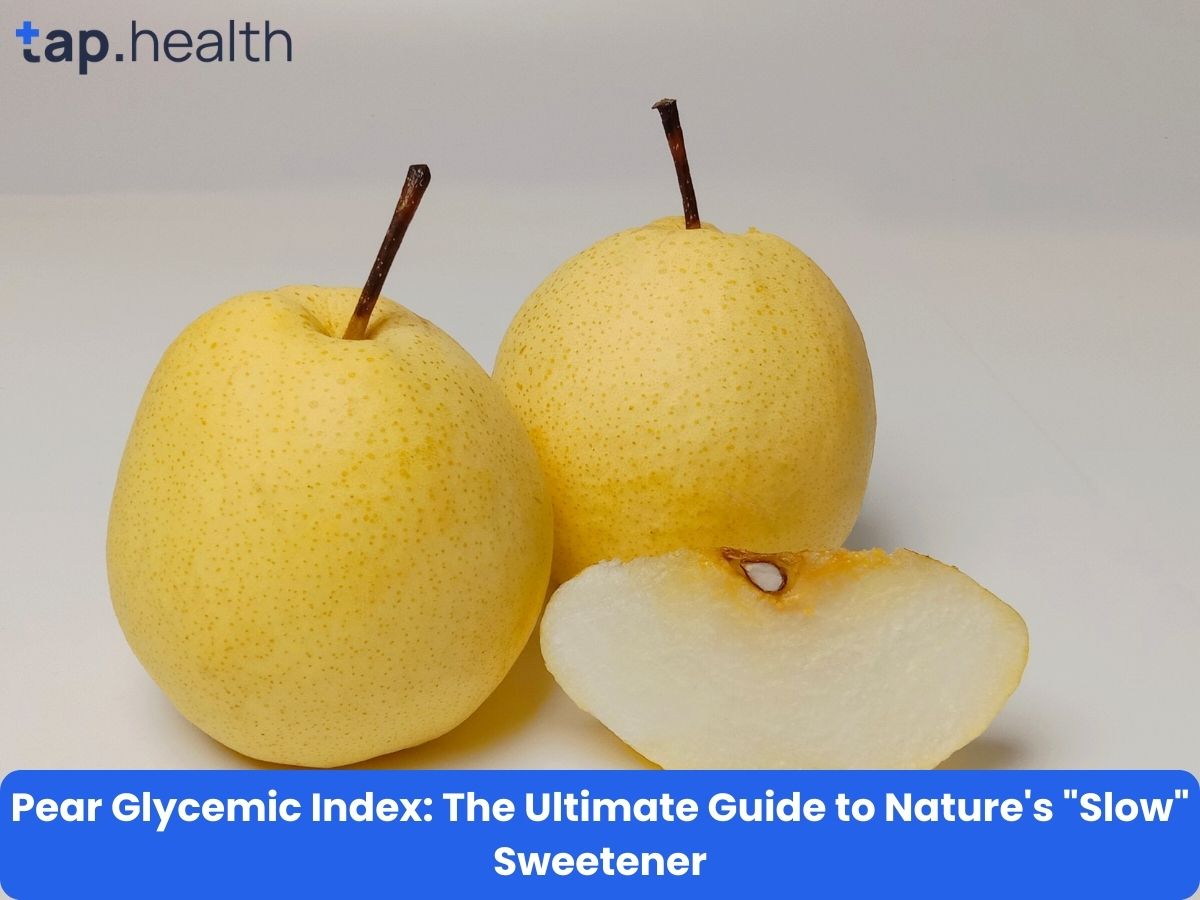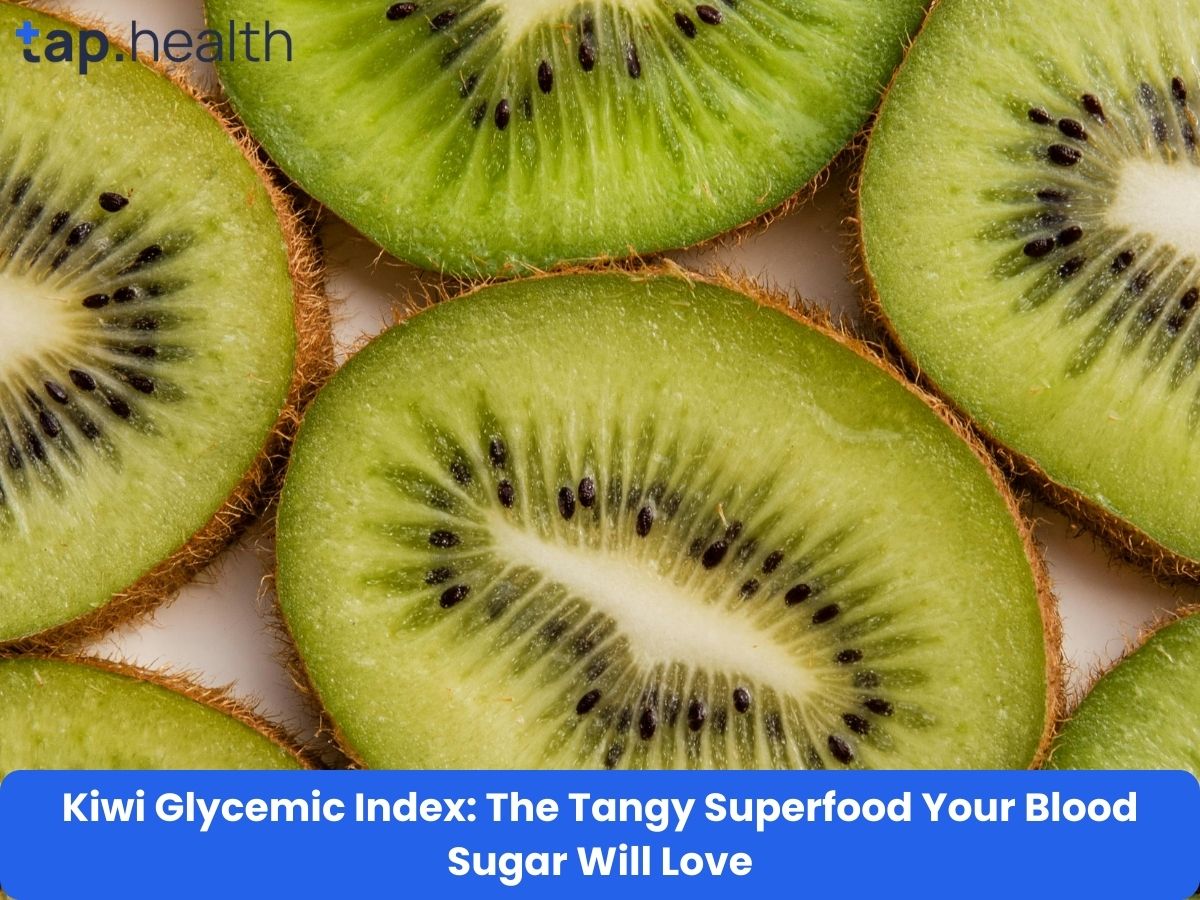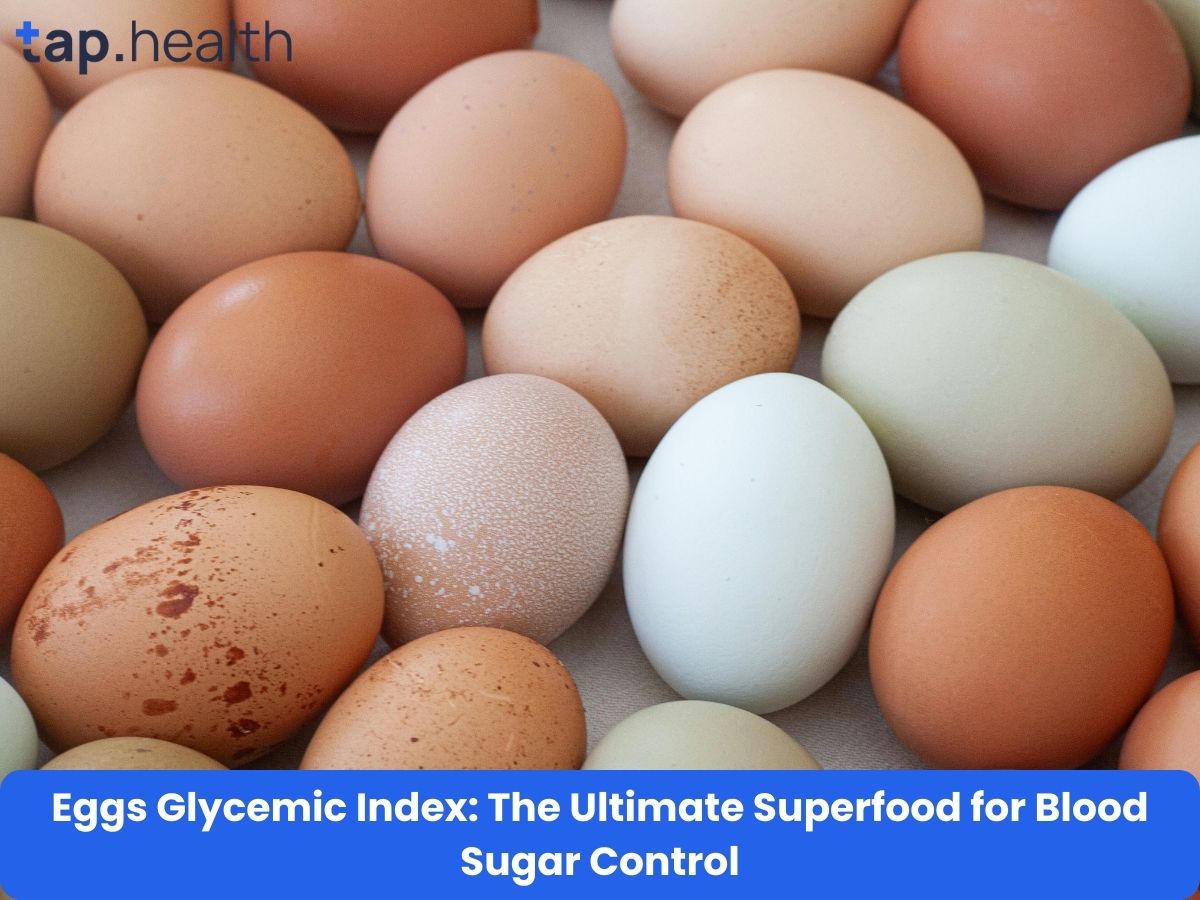You’ve probably chewed gum after lunch to freshen your breath or stayed alert during a long class. But have you ever looked at the label and wondered: What’s the real difference between regular gum and sugar-free gum? It’s not just about sugar. The two types of gum are made differently, taste different, affect your body in different ways, and even impact your teeth differently.
In this article, we’ll break down everything that sets normal gum and sugar-free gum apart. No confusing science terms. No jargon. Just clear, simple facts you can understand—even if you’re in 8th grade.
We’ll cover:
- What’s in each type of gum
- How they affect your blood sugar
- Which one is better for your teeth
- Taste differences
- Side effects
- Who should use which kind
- And much more
Let’s dive in.
What Is Normal Chewing Gum?
Normal chewing gum—also called regular gum or sugared gum—is the kind most people grew up with. Think of classic brands like Juicy Fruit, Doublemint, or Big Red.bIt’s sweet, chewy, and gives you that instant burst of flavor.
But what’s really in it?
Main Ingredients in Normal Gum
- Sugar – The main sweetener. Usually listed as sucrose or corn syrup.
- Gum Base – The chewy part that doesn’t dissolve. Made from synthetic rubber or natural latex.
- Flavorings – Natural or artificial flavors like mint, fruit, or cinnamon.
- Softeners – Like glycerin, to keep the gum from getting hard.
- Preservatives – To keep it fresh longer.
The biggest thing? Sugar is near the top of the ingredient list, which means there’s a lot of it.
What Is Sugar-Free Chewing Gum?
Sugar-free gum is made for people who want the benefits of gum—like fresh breath or focus—without the sugar.
Popular brands include:
- Trident
- Extra
- Orbit
- Pur
- Spry
These gums taste sweet but don’t use real sugar.
Main Ingredients in Sugar-Free Gum
- Artificial or Natural Sweeteners – Instead of sugar, they use things like:
- Aspartame
- Sucralose (Splenda)
- Acesulfame K
- Xylitol
- Sorbitol
- Stevia
- Gum Base – Same as regular gum.
- Flavorings – Same as regular gum.
- Softeners and Preservatives – Also similar.
So, sugar-free gum looks and feels like regular gum—but the sweetness comes from non-sugar ingredients.
The Big Difference: Sugar vs. No Sugar
The most obvious difference between normal and sugar-free gum is sugar content.
Let’s compare:
| Sugar per piece | 2–6 grams | 0 grams |
| Calories | 5–10 per piece | 2–5 per piece |
| Carbs | 2–7g | 0–2g (mostly from sugar alcohols) |
| Effect on blood sugar | Yes, raises it | No, or very little |
Even though the numbers seem small, they matter—especially if you’re watching your sugar intake.
How Sugar in Normal Gum Affects Your Body
When you chew regular gum, here’s what happens:
1. Sugar Dissolves in Your Mouth
As you chew, the sugar starts to dissolve. Some of it gets absorbed through the lining of your mouth, but most is swallowed.
2. Sugar Enters Your Digestive System
Once swallowed, the sugar goes to your stomach and then your intestines, where it’s broken down into glucose.
3. Blood Sugar Rises
Glucose enters your bloodstream, causing your blood sugar to go up. Your pancreas responds by releasing insulin to help your cells use the sugar for energy.
4. Possible Energy Crash Later
After the sugar rush, your blood sugar may drop quickly, leaving you feeling tired or hungry. This cycle is worse if you chew multiple pieces or eat sugary foods along with the gum.
How Sugar-Free Gum Affects Your Body
Since sugar-free gum has no real sugar, it doesn’t cause a blood sugar spike.
But that doesn’t mean it does nothing.
1. Sweeteners Trick Your Taste Buds
Your tongue tastes sweetness, but no sugar enters your blood. Artificial sweeteners like aspartame or sucralose are hundreds of times sweeter than sugar—but have no calories and don’t raise blood sugar.
2. Minimal Impact on Insulin
Some studies show that the taste of sweetness (even without sugar) can trigger a small insulin release. This is called the cephalic phase insulin response. But for most people, this effect is so small it doesn’t matter. People with diabetes or on insulin should be aware, though.
3. Sugar Alcohols May Affect Digestion
Many sugar-free gums use sugar alcohols like xylitol, sorbitol, or maltitol. These are not fully absorbed by the body. If you chew too much, they can cause:
- Gas
- Bloating
- Diarrhea
But they have very little effect on blood sugar—which is why they’re used in diabetic-friendly products.
Dental Health: Which Gum Is Better for Your Teeth?
Here’s a big surprise: chewing sugar-free gum can actually be good for your teeth.
Let’s see why.
Normal Gum and Tooth Decay
- Sugar feeds bad bacteria in your mouth.
- These bacteria produce acid that attacks tooth enamel.
- Over time, this leads to cavities and tooth decay.
Chewing sugared gum after meals can make this worse—especially if you don’t brush afterward.
Sugar-Free Gum and Oral Health
Sugar-free gum, especially with xylitol, can help protect your teeth.
Here’s how:
1. Increases Saliva Production
Chewing gum stimulates saliva. Saliva:
- Washes away food particles
- Neutralizes acid from bacteria
- Helps rebuild tooth enamel with calcium and phosphate
2. Xylitol Fights Cavity-Causing Bacteria
Xylitol is a natural sweetener that:
- Can’t be used by cavity-causing bacteria (like Streptococcus mutans)
- Reduces their numbers over time
- Lowers acid production in the mouth
Studies show that people who chew xylitol gum 3–5 times a day have fewer cavities.
The American Dental Association (ADA) even gives its seal of approval to certain sugar-free gums.
Taste: Does Sugar-Free Gum Taste as Good?
This is a common question—and the answer depends on who you ask.
Normal Gum Taste
- Sweet, familiar, and strong at first.
- Flavor fades quickly (in 10–15 minutes).
- Some people love the classic “candy-like” taste.
Sugar-Free Gum Taste
- Also sweet, but the sweetness can feel different.
- Artificial sweeteners sometimes leave a slight aftertaste (like a cool or metallic note).
- Xylitol has a natural, cooling effect—many people like it.
- Flavor often lasts longer than in regular gum.
Bottom line: Most people can’t tell the difference after a few chews. And many actually prefer sugar-free gum once they get used to it.
Calories and Weight: Which Gum Is Better?
If you’re trying to lose weight or eat healthier, this matters.
Normal Gum
- About 5–10 calories per piece
- Mostly from sugar
- If you chew 5 pieces a day = 25–50 extra calories
That may not sound like much, but it adds up over time.
Sugar-Free Gum
- Only 2–5 calories per piece
- Almost no carbs
- Great for low-carb, keto, or diabetic diets
Plus, chewing gum can help reduce snacking and curb sugar cravings—especially sugar-free gum. One study found that people who chewed gum between meals ate fewer snacks and less junk food.
So while gum isn’t a weight-loss tool, it can support healthy habits.
Blood Sugar and Diabetes: Which Gum Is Safer?
For people with diabetes, prediabetes, or insulin resistance, the choice is clear.
Normal Gum: Not Recommended
- Contains sugar → raises blood glucose
- Requires insulin response
- Can interfere with blood sugar control
Even one piece can make a difference if you’re tracking every gram of carb.
Sugar-Free Gum: Generally Safe
- No sugar → no blood sugar spike
- Approved by the American Diabetes Association
- Can help reduce sweet cravings
But watch out for:
- Maltitol: Has a higher glycemic index (~35) and can raise blood sugar slightly.
- Hidden carbs: Some sugar-free gums still have 1–2g of carbs per piece.
Tip: Look for gums with xylitol, erythritol, or stevia—they have the lowest impact on blood sugar.
Are Artificial Sweeteners Safe?
This is a big concern for many people. Are the sweeteners in sugar-free gum safe? Or are they dangerous?
Let’s look at the facts.
What the Experts Say
- FDA (U.S. Food and Drug Administration): Approves aspartame, sucralose, acesulfame K, and others as safe.
- WHO (World Health Organization): Says these sweeteners are safe within daily limits.
- Mayo Clinic and Harvard Medical School: Confirm that artificial sweeteners don’t cause cancer or serious health issues in normal amounts.
Common Sweeteners and Their Safety
| Aspartame | Yes | Not for people with phenylketonuria (PKU) |
| Sucralose | Yes | Stable, doesn’t break down in the body |
| Acesulfame K | Yes | Often used with other sweeteners |
| Xylitol | Yes | Great for teeth, but toxic to dogs |
| Stevia | Yes | Natural, plant-based, no known risks |
Bottom line: The sweeteners in sugar-free gum are safe for most people when used in normal amounts.
Side Effects of Each Type of Gum
No gum is completely side-effect-free. Let’s look at the downsides of each.
Side Effects of Normal Gum
- Tooth Decay – Sugar feeds bacteria that cause cavities.
- Blood Sugar Spikes – Not good for diabetics or insulin-resistant people.
- Weight Gain Over Time – Extra sugar and calories add up.
- Acid Reflux – Chewing gum can increase stomach acid, worsening heartburn.
Side Effects of Sugar-Free Gum
- Digestive Issues – Sugar alcohols can cause gas, bloating, or diarrhea if you chew too much.
- Jaw Pain – Chewing for long periods can strain jaw muscles.
- Headaches – Rare, but some people report headaches from artificial sweeteners.
- Toxic to Dogs – Xylitol is deadly to dogs, even in small amounts.
Important: If you have IBS (irritable bowel syndrome), sugar alcohols may worsen symptoms. Choose gums without sorbitol or maltitol.
Cost and Availability: Which One Is Easier to Find?
Both types of gum are widely available.
Normal Gum
- Found in every gas station, store, and vending machine.
- Usually cheaper than sugar-free gum.
- More flavors and brands.
Sugar-Free Gum
- Also widely available in supermarkets and pharmacies.
- Slightly more expensive (but prices are dropping).
- Growing in popularity due to health trends.
Winner: Normal gum wins on price and variety. Sugar-free gum wins on health.
Environmental and Ethical Considerations
Believe it or not, your gum choice can have an environmental impact.
Gum Base: The Non-Dissolving Part
- Most gum base is made from synthetic rubber (a plastic).
- It doesn’t break down easily.
- When people spit it out, it becomes litter that can last for years.
This is true for both normal and sugar-free gum.
Biodegradable Gum?
A few brands (like Simply Gum or Glee Gum) use natural chicle (tree sap) instead of synthetic rubber.
These are:
- More eco-friendly
- Biodegradable
- Often sugar-free and sweetened with xylitol or cane sugar
But they’re harder to find and more expensive.
Who Should Choose Normal Gum?
Normal gum isn’t “bad” for everyone.
It might be okay if:
- You’re healthy and eat a balanced diet
- You only chew one piece occasionally
- You brush your teeth soon after
- You don’t have diabetes or blood sugar issues
But even then, sugar-free is often a smarter long-term choice.
Who Should Choose Sugar-Free Gum?
Sugar-free gum is better for:
1. People with Diabetes or Prediabetes
- Helps avoid blood sugar spikes
- Fits into carb-controlled diets
2. Anyone Trying to Improve Oral Health
- Reduces cavities
- Increases saliva
- Fights bad breath
3. People on Low-Carb or Keto Diets
- Very low in carbs and sugar
- Won’t kick you out of ketosis
4. Those Trying to Lose Weight
- Low calorie
- Helps reduce snacking
5. Kids and Teens (with supervision)
- Less risk of cavities
- Can help reduce candy cravings
Just make sure they don’t swallow it or chew too much (digestive issues).
Can You Switch from Normal to Sugar-Free Gum?
Yes—and many people do.
Here’s how to make the switch smoothly:
- Start with a flavor you love (mint, fruit, etc.).
- Try different brands—some taste better than others.
- Give it time—your taste buds adjust in a few days.
- Use it to replace sugary snacks—not just as gum.
Many people don’t even notice the difference after a week.
Does Sugar-Free Gum Break a Fast?
If you’re doing intermittent fasting, you might wonder: does sugar-free gum break your fast?
Short Answer: Technically yes, but usually not in practice.
- Sugar-free gum has almost no calories (2–5 per piece).
- It doesn’t spike insulin in most people.
- Many fasting experts say it’s okay to chew one piece to curb hunger.
But if you’re doing a strict water fast or metabolic testing, it’s best to avoid it.
Is Nicotine Gum the Same as Sugar-Free Gum?
No. Nicotine gum is not the same as regular sugar-free gum. It’s used to help people quit smoking.
Key Differences:
| Purpose | Freshen breath, focus | Quit smoking |
| Contains Nicotine | No | Yes |
| Effect on Body | Minimal | Raises heart rate, blood pressure, and blood sugar |
| Blood Sugar Impact | None | Can increase glucose levels |
Important: Nicotine can raise blood sugar and reduce insulin sensitivity. People with diabetes should talk to a doctor before using it.
What About Natural or Herbal Gums?
Some brands sell “natural” gums made with:
- Real fruit extracts
- Stevia or xylitol
- No artificial flavors or colors
Are they better?
Pros:
- Fewer chemicals
- Often biodegradable base
- Xylitol for dental health
Cons:
- More expensive
- Fewer flavors
- May still contain sugar alcohols
They’re a great option if you want a cleaner ingredient list.
How to Read Gum Labels Like a Pro
Want to know what you’re really chewing?
Follow these tips:
1. Check the Sugar Content
- Look for “0g Sugar” on the label.
- If sugar is listed first, it’s high in sugar.
2. Look at Total Carbs and Fiber
- Subtract fiber and half the sugar alcohols to get net carbs.
- Example: 3g carbs – 2g sugar alcohols ÷ 2 = 2g net carbs.
3. Scan the Ingredients
- Avoid: Sugar, corn syrup, dextrose, maltose.
- Choose: Xylitol, erythritol, stevia, aspartame, sucralose.
4. Watch Serving Size
- One pack may have 2–3 pieces. Check how many you’re actually eating.
Real-Life Scenario: The After-Lunch Choice
Let’s make this practical. Imagine two coworkers, Alex and Sam, both just finished a garlicky lunch and want to freshen their breath before a client meeting.
- Alex chooses a piece of classic, sugar-filled bubble gum.
- The Experience: The initial flavor is a burst of sweet, familiar bubblegum bliss. It’s great for about two minutes.
- The Aftermath: After the sugar coating dissolves, the flavor is gone. The sugary residue coats their teeth, providing a quick snack for mouth bacteria. Within 10 minutes, Alex is spitting out a bland, tasteless piece of gum and might already be thinking about another snack for an energy boost.
- Sam chooses a piece of sugar-free peppermint gum sweetened with xylitol.
- The Experience: The taste is initially strong and refreshing, perhaps a different kind of sweet than Alex’s gum.
- The Aftermath: The flavor lasts throughout the entire 20-minute meeting. The act of chewing stimulates saliva, which helps wash away lunch particles and neutralizes acids on Sam’s teeth. The xylitol is actively disrupting cavity-causing bacteria. Sam feels refreshed and doesn’t have a sugar crash later.
This everyday decision highlights the cumulative difference: one choice promotes oral health and sustained freshness, while the other offers a fleeting sugar rush with negative dental consequences.
Expert Contribution: What Dentists and Dietitians Say
It’s one thing to read a comparison; it’s another to know what the experts recommend. The consensus from health authorities is clear and powerful.
The American Dental Association (ADA) has actually awarded its Seal of Acceptance to certain sugar-free gums. To earn this seal, a product must prove it is safe for oral health and effective. The ADA states that chewing sugar-free gum for 20 minutes after meals can help reduce tooth decay and even help remineralize enamel.
Similarly, the American Diabetes Association clearly supports the use of sugar-free foods and beverages as a tool for people with diabetes to enjoy sweetness without spiking their blood glucose levels. They note that sugar substitutes are safe to use within the recommended daily limits.
Recommendations Grounded in Proven Research and Facts
Based on the science, expert guidance, and a plain look at the ingredients, here are actionable, evidence-based recommendations for choosing your gum:
- Make Sugar-Free Your Default Choice: This is the single most important takeaway. Given the proven benefits for your teeth and body, there is no health reason to regularly choose sugar-sweetened gum. Make “sugar-free” your non-negotiable starting point.
- Look for the ADA Seal: When possible, choose a sugar-free gum that has the American Dental Association Seal of Acceptance. This is your guarantee that it has been tested and proven to be beneficial for oral health.
- Prioritize Xylitol and Erythritol: When scanning the ingredients list, favor gums that list xylitol (for its proven dental benefits) or erythritol (for being easy on the stomach and having zero glycemic impact) high on the list.
- Chew Strategically: Don’t just chew idly. Use sugar-free gum with purpose:
- Chew for 20 minutes after eating to stimulate saliva and neutralize acids.
- Use it to curb cravings for sugary snacks or mindless eating.
- Avoid chewing for hours on end to prevent jaw muscle fatigue.
- Always Keep it Away from Pets: This bears repeating. If your sugar-free gum contains xylitol, it is a lethal threat to dogs. Store all gum securely and be vigilant about dropped pieces.
So, Which One Should You Choose? Making an Informed Decision
The choice between normal and sugar-free gum is clear for most people.
You should choose SUGAR-FREE gum if:
- You care about preventing cavities and improving your dental health.
- You have diabetes or prediabetes and need to manage your blood sugar.
- You are watching your calorie or carbohydrate intake.
- You want a longer-lasting flavor experience.
You might choose NORMAL gum if:
- You strongly prefer the taste and don’t chew gum often enough to worry about dental impacts.
- You have a very sensitive stomach that reacts badly to even small amounts of sugar alcohols.
- It’s the only option available.
However, for everyday, regular chewing, the health benefits of sugar-free gum make it the smarter, more responsible choice for your body.
Final Verdict: Which Gum Should You Choose?
Here’s a quick summary:
| You have diabetes | ✅ Sugar-free gum |
| You want healthy teeth | ✅ Sugar-free gum (with xylitol) |
| You’re on a diet | ✅ Sugar-free gum |
| You’re fasting | ✅ One piece of sugar-free gum (usually okay) |
| You’re a kid with no cavities | 🟡 Normal gum (occasionally) |
| You just want flavor | 🟡 Either—personal preference |
Overall winner: Sugar-free gum.
It’s better for your teeth, blood sugar, and long-term health—with almost no downside if used in moderation.
Frequently Asked Questions (FAQ) on What Is the Difference Between Normal and Sugar-Free Chewing Gum?
1. Is sugar-free gum really sugar-free?
Yes. It contains 0g of sugar. It uses artificial or natural sweeteners instead.
2. Does sugar-free gum have carbs?
Sometimes. It may have 1–2g of carbs from sugar alcohols like xylitol or sorbitol. These have minimal effect on blood sugar.
3. Can you chew sugar-free gum every day?
Yes, but limit to 3–5 pieces. Too much can cause gas or diarrhea.
4. Is aspartame bad for you?
No. Decades of research show aspartame is safe for most people. Only avoid it if you have PKU (a rare genetic disorder).
5. Does sugar-free gum cause cancer?
No. Studies have found no link between artificial sweeteners in gum and cancer.
6. Why does sugar-free gum say “excess consumption may have a laxative effect”?
Because sugar alcohols (like sorbitol and xylitol) aren’t fully digested. They ferment in the gut and can cause diarrhea if you eat too much.
7. Can sugar-free gum help you lose weight?
Not directly. But it can reduce snacking and sugar cravings, which may help with weight control.
8. Is xylitol safe for humans?
Yes. Xylitol is safe and even good for teeth. But it’s toxic to dogs—keep it away from pets.
9. Does normal gum cause cavities?
Yes. Sugar feeds bacteria that produce acid, which leads to tooth decay.
10. Can children chew sugar-free gum?
Yes, but supervise young kids to prevent choking. Recommended for kids 5+.
11. Does chewing gum help with focus?
Yes. Chewing gum increases blood flow to the brain and can improve alertness and concentration.
12. Is there gum without artificial ingredients?
Yes. Brands like Simply Gum or Glee Gum use natural chicle, stevia, and natural flavors.
13. Can sugar-free gum raise blood sugar?
Not usually. But gums with maltitol can cause a small rise. Stick to xylitol or stevia for the lowest impact.
14. How long should you chew gum?
5–20 minutes is enough. After that, the flavor is gone, and you’re just chewing base.
15. Is it bad to swallow gum?
No. Swallowing gum once in a while isn’t dangerous. It passes through your system. But don’t make it a habit—especially for kids.
Conclusion
So, what is the difference between normal and sugar-free chewing gum?
It comes down to this:
- Normal gum has sugar, calories, and can harm your teeth and blood sugar.
- Sugar-free gum has no sugar, fewer calories, and can actually help your teeth and cravings.
Both taste great and do the job of freshening breath or keeping you alert. But when it comes to health, safety, and long-term benefits, sugar-free gum is the clear winner. You don’t have to give up gum—you just have to choose the smarter kind.



